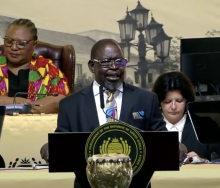The African Development Bank-financed Tanzania-Burundi-DR Congo Standard Gauge Railway (SGR) Project has commenced to Phase 2.
The bank's financing is intended to construct 651 kilometres on the Tanzania-Burundi railway line.
The work will consist of the development of a single electrified standard-gauge track.
This will be subdivided into three lots: Tabora-Kigoma (411km) and Uvinza-Malagarasi (156km) sections in Tanzania; and the Malagarasi-Musongati section (84km) in Burundi.
The standard-gauge railway project will be connected to the existing railway network of Tanzania, providing access to the Port of Dar es Salaam.
In total, 400 kilometres of rail infrastructure has already been built in Tanzania from Dar es Salaam to Dodoma since the start of the first phase of the project.
The rest of the section from Dodoma to Tabora is under construction.
The bank will provide $98.62 million to Burundi in the form of grants and $597.79m to Tanzania in loans and guarantees.
As the Initial Mandate Lead Arranger, the bank will structure and mobilise financing of up to $3.2 billion from commercial banks, development financial institutions, export credit agencies and institutional investors.
The total cost of the project both in Tanzania and Burundi is estimated at nearly $3.93bn.
Access to an efficient, cost-effective long-haul bulk transport service through the SGR will incentivise large-scale mining and commercial agriculture.
It will transform the Central Transport Corridor into an economic corridor by enhancing trade and manufacturing opportunities along the corridor influence zone, and provide for a shift from road trucking transportation, which causes accidents and high road maintenance costs.
The SGR railway network will unlock and connect key economic processing zones, industrial parks, inland container depots, and population centres along the central corridor.
This will enhance accessibility and promote economic activities.
This project will contribute to building resilience by supporting the creation and development of institutions that will manage the new railway sector in Burundi and supporting capacity building through skills training in both countries.
This project is a priority for not only the East African Community (EAC) Rail Master Plan, but the African Union's Program for Infrastructure Development in Africa and will facilitate economic and social transformation in both countries and the region.
The construction of this railway will allow Burundi to intensify the exploitation of nickel, of which the country has the tenth-largest deposit in the world in the Musongati mining fields. The country also has resources such as lithium and cobalt, which are expected to generate significant revenue for the country through the rail link with the Port of Dar es Salaam, which currently accounts for 80% of the country's import and export trade. This will add value to the national GDP and allow Burundi to have additional resources to accelerate its social and economic development.













